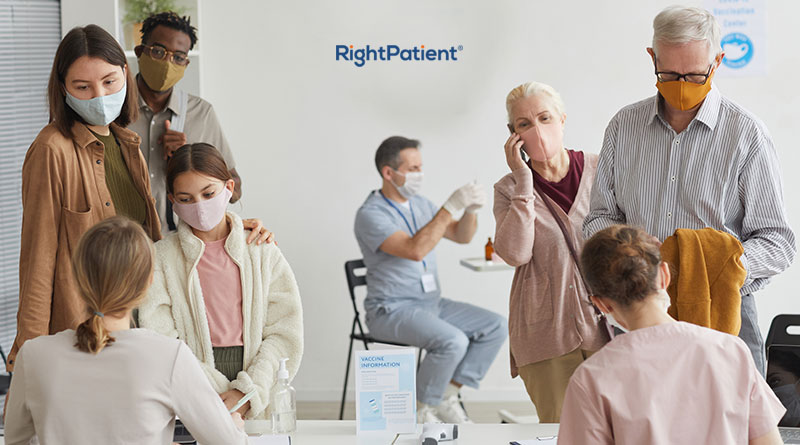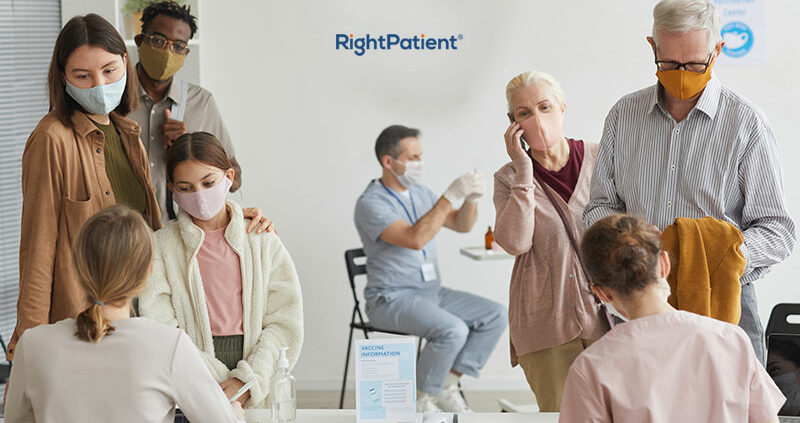Improving Patient Outcomes Has to Be the Main Concern since In-Person Visits Are Back

Luckily, it looks like the COVID-19 pandemic may be ending at last. Whilst COVID-19 cases 19 are still occurring, the overall rate has slowed down, thanks to over 326 million Americans getting vaccinated. As restrictions that used to be in place since the beginning of the pandemic start to ease in most states, businesses are gradually opening back up. However, healthcare, which did not close is finally receiving great news – in-person appointments, as well as margins, are going up gradually. Rising patient appointments are not sufficient for caregivers – guaranteeing quality and safety in healthcare facilities is also necessary for improving patient outcomes.
Having said that, let’s look closer at the present condition concerning patient volumes as well as margins, some statistics regarding them, and the reason hospitals must find solutions that can assist them in lowering significant costs, eliminating current issues, and surviving this difficult environment.
Healthcare providers may, at last, be getting a break
After several months of financial losses, along with suffering caused by COVID-19, healthcare providers, finally are opening facilities for in-person visits. Whilst the reaction is sluggish, it is rising steadily regarding patient volumes along with margins, based on research by KaufmanHall – let’s look closer at a few of the stats.
These stats reveal that whilst patient volumes went up, particularly outpatient visits, providers are still ending up with extremely low margins. In May, the median hospital operating margin index was only 2.6 percent, and if you include the federal CARES funding, that was still only 3.5 percent.
Nevertheless, the operating margin climbed 95.2 percent YTD (year-to-date) when compared to Jan to May 2021, and operating EBITDA (Earnings Before Interest, Taxes, Depreciation, and Amortization) margin improved close to double – 102.4 percent YTD in May, the latter is excluding the CARES aid.
Conversely, when in comparison to pre-COVID-19 periods (Jan to May 2019), the operating margin was down to 20.5 percent YTD without CARES.
Therefore, what do all these numbers really show regarding healthcare providers?
Actually, it is very simple – when health systems and hospitals were able to open up, and when the restrictions eased, that led to rises in their margins in comparison to the shutdown timeframes. Though the figures were lower in comparison to the pre-pandemic time due to patient numbers being quite high then, a few cases were nearer to pre-pandemic levels, said that same report.
Based on these numbers, it is very clear healthcare is improving its numbers, yet hospitals and health systems can’t stop worrying too soon – they must work towards improving patient outcomes.
Providers must deliver their patients a safer atmosphere, carry out telehealth services for people who don’t want to do in-person appointments and decrease issues that may harm patient care. Overall, they must make sure they’re striving to improve healthcare outcomes.
Improving patient outcomes is necessary to mitigate losses
Even while COVID-19 was rampaging, there were a lot of times when it was obvious hospitals needed to work hard towards improving patient outcomes. Incorrect patient information led to repeated lab tests, inappropriate data sharing, sending results to incorrect patients, etc. Regrettably, that is not new, since healthcare providers have always faced these issues, with one of the dominant causes being the wrong identification of patients.
Misidentifying patients impedes patient outcomes
It is very simple – whenever patients get misidentified, they’re assigned an incorrect EHR, and their treatment process is completely wrong from the start. Patients may get asked to do an unneeded or repetitive lab test, and then will most certainly receive incorrect treatment – all of this gets recorded in an incorrect EHR. This all causes detrimental healthcare outcomes, as well as hospital readmissions, plus in some cases, people even die.
Healthcare providers were facing litigation costs already as well as loss of income because of such cases. However, the COVID-19 issue, along with these losses, might be sufficient to make them permanently close their doors. They simply can’t afford to make medical mistakes and jeopardize patient safety.
Luckily, they do not have to – RightPatient can help with that.
RightPatient improves patient outcomes
RightPatient identifies patients correctly from the beginning, and because it is touchless, it offers a hygienic and safe experience for all. Our biometric patient ID platform is used by many reputed healthcare providers like Terrebonne General Medical Center as well as Grady Health, and it protects millions of patients from adverse effects.
Due to COVID-19, hospitals have to do what they can to lower their losses. RightPatient can do this since it improves healthcare outcomes, as well as averts misidentification problems, and improves the facility’s bottom line.










Leave a Reply
Want to join the discussion?Feel free to contribute!